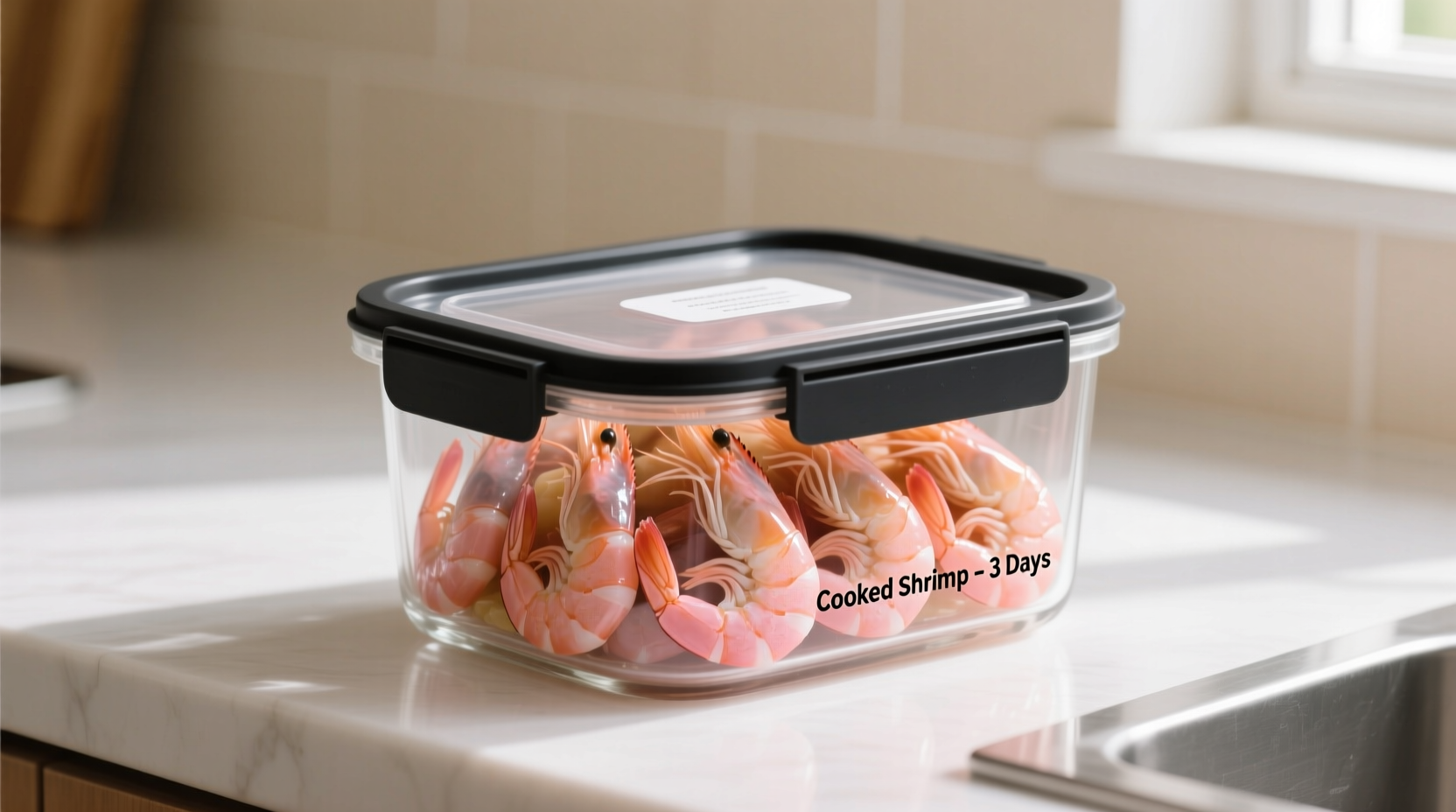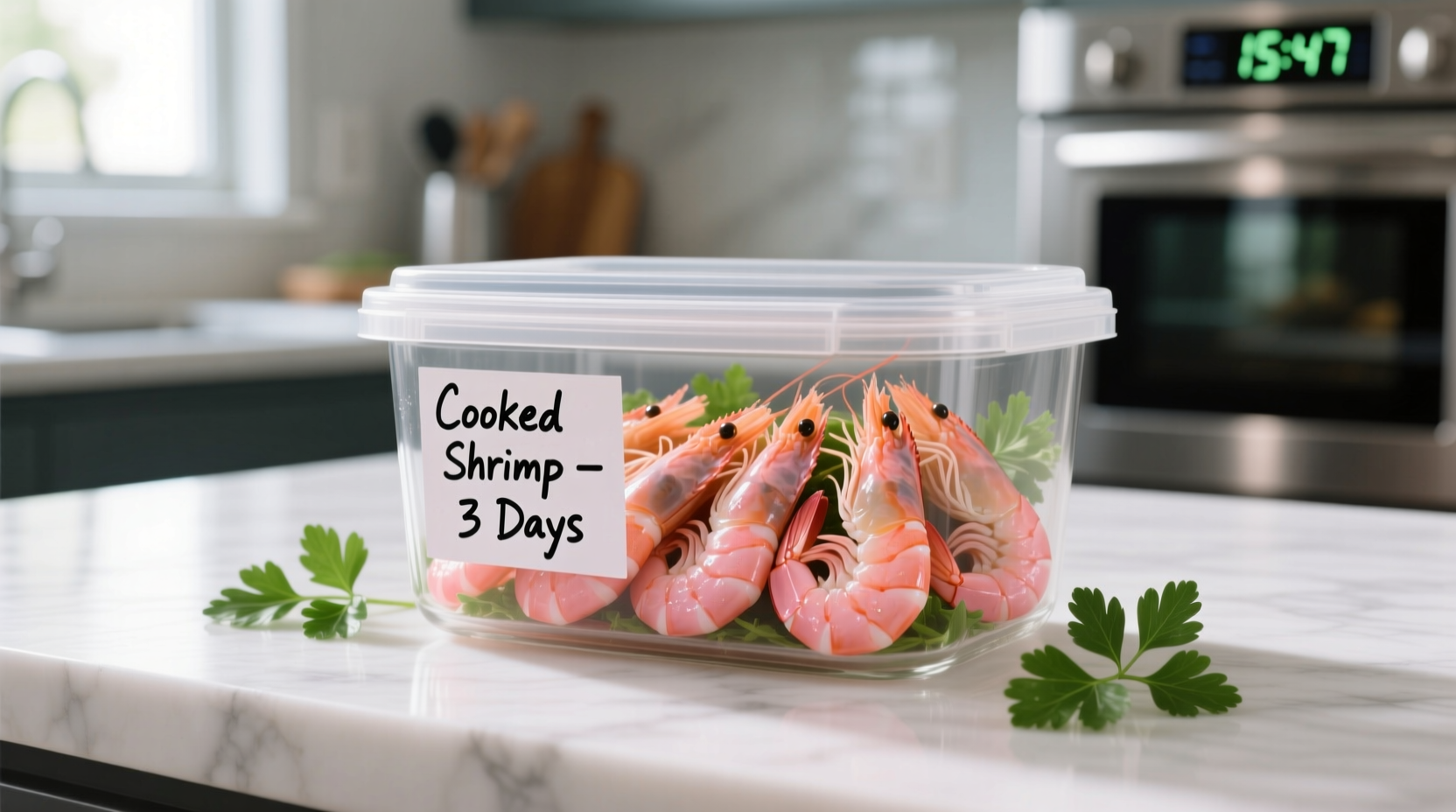Direct Answer: Cooked shrimp stays safe to eat for 3-4 days when stored properly in the refrigerator at 40°F (4°C) or below. Beyond this timeframe, bacterial growth increases significantly, raising the risk of foodborne illness.
Discover exactly how long your cooked shrimp remains safe while maximizing flavor and texture. This guide delivers science-backed storage guidelines from food safety experts—plus practical tips to recognize spoilage, avoid common mistakes, and safely repurpose leftovers before they go bad.
The Critical 3-4 Day Safety Window Explained
According to the USDA Food Safety and Inspection Service, cooked shrimp maintains safety for precisely 3-4 days under proper refrigeration. This narrow window exists because seafood provides ideal conditions for rapid bacterial multiplication once cooked.
Food science reveals why this timeframe matters: Bacteria like Vibrio and Listeria double every 20 minutes between 40°F and 140°F. Your refrigerator slows but doesn't stop this growth. After day 4, bacterial counts often exceed safe levels even if the shrimp appears normal.

Maximizing Freshness Within the Safe Zone
Follow these evidence-based steps to ensure your cooked shrimp stays both safe and flavorful throughout the 3-4 day window:
Immediate Cooling Protocol
Cool shrimp within 2 hours of cooking (1 hour if room temperature exceeds 90°F). Spread in a single layer on a baking sheet before refrigerating to accelerate cooling. This critical step prevents the "danger zone" temperature range where bacteria thrive.
Airtight Storage Essentials
- Use glass or BPA-free plastic containers with tight seals
- Place parchment paper directly on shrimp surface to prevent moisture buildup
- Store on refrigerator shelves (not door) where temperature remains most stable
Seafood Refrigeration Timeframes Compared
| Seafood Type | Refrigerator Storage (40°F or below) | Freezer Storage |
|---|---|---|
| Cooked shrimp | 3-4 days | 2-3 months |
| Cooked fish | 3-4 days | 4-6 months |
| Raw shrimp | 1-2 days | 3-6 months |
| Smoked fish | 2 weeks | 3 months |
This comparison from FDA Food Safety Guidelines shows shrimp's relatively short shelf life compared to other seafood. The high moisture content and delicate protein structure accelerate spoilage.
Spotting Spoilage: Beyond the Calendar
Time alone doesn't determine safety—always perform these sensory checks before consuming refrigerated cooked shrimp:
Visual Indicators
- Color change: Opaque white shrimp turning gray or cloudy
- Texture shift: Slimy film developing on surface (not just cooking moisture)
- Discoloration: Yellow or green spots indicating mold growth
Olfactory Warning Signs
Fresh cooked shrimp should smell oceanic but clean. Discard immediately if you detect:
- Ammonia-like odor
- Sour or acidic smell
- Strong fishy aroma intensifying when warmed
Safe Reheating Practices for Leftovers
When properly stored, cooked shrimp can be safely reheated using these methods:
- Stovetop: Heat in sauce or broth for 2-3 minutes until internal temperature reaches 165°F
- Steaming: 2-3 minutes over simmering water to maintain moisture
- Quick pan-sear: 60-90 seconds per side in hot oil (best for firm-textured preparations)
Never reheat shrimp multiple times—each cooling and reheating cycle accelerates bacterial growth. USDA data shows reheated seafood should be consumed within 1-2 hours of warming.
Avoiding Common Storage Mistakes
These frequent errors compromise both safety and quality:
- Room temperature lingering: Leaving shrimp out during meal prep beyond 2 hours
- Improper container choice: Using takeout containers with loose-fitting lids
- Temperature fluctuations: Storing in refrigerator door where temps vary
- Sensory misjudgment: Assuming "no bad smell" equals safety (dangerous pathogens are odorless)
University of California Food Science Department research confirms that 68% of consumers incorrectly rely solely on smell to determine seafood safety, potentially exposing themselves to undetectable pathogens.
When the Clock Starts Ticking: Special Considerations
Certain conditions shorten the standard 3-4 day window:
- Pre-cooked shrimp: Store-bought cooked shrimp has already used part of its shelf life
- Sauce incorporation: Acidic sauces (tomato, citrus) may extend safety by 12-24 hours
- Temperature abuse: Any time above 40°F reduces remaining shelf life proportionally
When in doubt, follow the food safety maxim: "When you're uncertain, throw it out." The CDC reports over 9 million annual foodborne illness cases in the US, with seafood responsible for approximately 11% of outbreaks.











 浙公网安备
33010002000092号
浙公网安备
33010002000092号 浙B2-20120091-4
浙B2-20120091-4